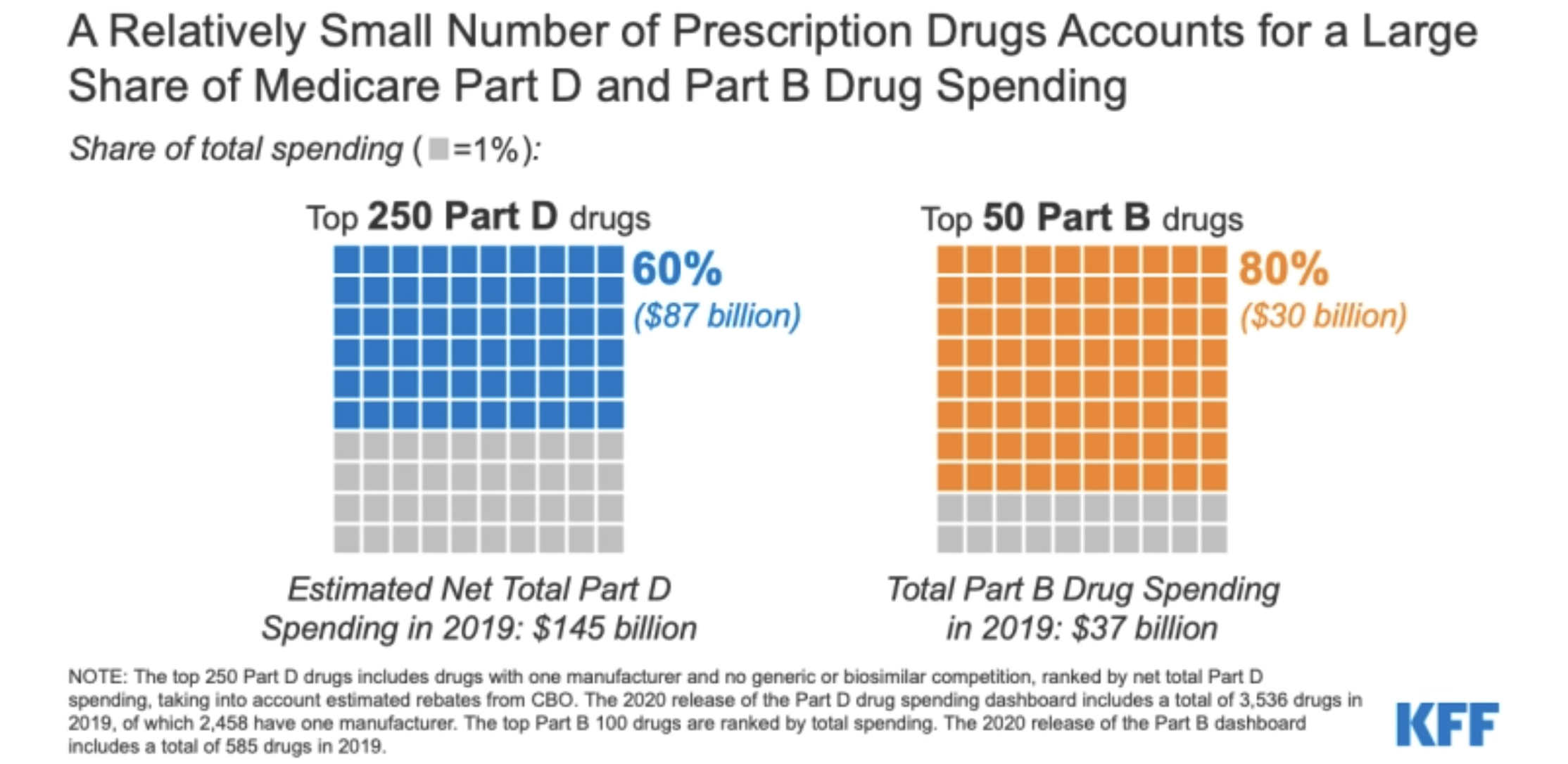With Medicare prescription drug spending, the 80-20 rule applies. A new Kaiser Family Foundation analysis by Juliette Cubanski and Tricia Neuman finds that a small portion of Medicare Part B and Part D prescription drugs make up a large percentage of Medicare drug costs.
Cubanski and Neuman estimate that Medicare Part D drug spending in 2019 was about $145 billion after rebates. Medicare Part D currently covers about 3,500 drugs purchased through a pharmacy. Just 250 of these drugs–brand-name drugs with no competitors–no generic substitutes or biosimilars, accounted for 60 percent of that prescription drug spending.
The average net cost for each of these 250 drugs was $5,750. You have to wonder how many people with Medicare could not afford to fill these prescriptions given high Part D out-of-pocket costs. The ten costliest of these 250 drugs accounted for 16 percent of Medicare Part D spending but just .3 percent of all drugs covered under Part D. Cancer and diabetes medicines as well as medicine for rheumatoid arthritis are among the top ten.
Bottom line: If Congress passes legislation to rein in Medicare prescription drug prices on 250 drugs, as specified in the House bill that passed in 2019, H.R.3, savings would be significant.
Fifty drugs covered under Medicare Part B account for 80 percent of Part B drug spending. Medicare Part B covers drugs received in hospital or administered by a doctor in the doctor’s office. It does not cover drugs purchased from a pharmacy.
In 2019, the ten costliest of these Part B drugs represented 43 percent of all Part B drug spending but just 2 percent of all the drugs Part B covers. Cancer, rheumatoid arthritis and osteoporosis drugs are among these top ten, as well as two drugs for macular degeneration.
Cubanski and Newman suggest that policymakers in Congress might be wise to limit drug price negotiation to 250 drugs given that they account for such a high proportion of overall spending. However, they also recognize that there’s value in extracting savings from all drugs. What they fail to mention is that there are millions of people with Medicare who will be left with unaffordable drug and health care costs–and won’t be able to fill their prescriptions–if Congress limits negotiation to just 250 drugs and takes no further action to limit out-of-pocket drug costs. In addition, higher Medicare drug spending drives up Medicare premiums.
Here’s more from Just Care:

Leave a Reply